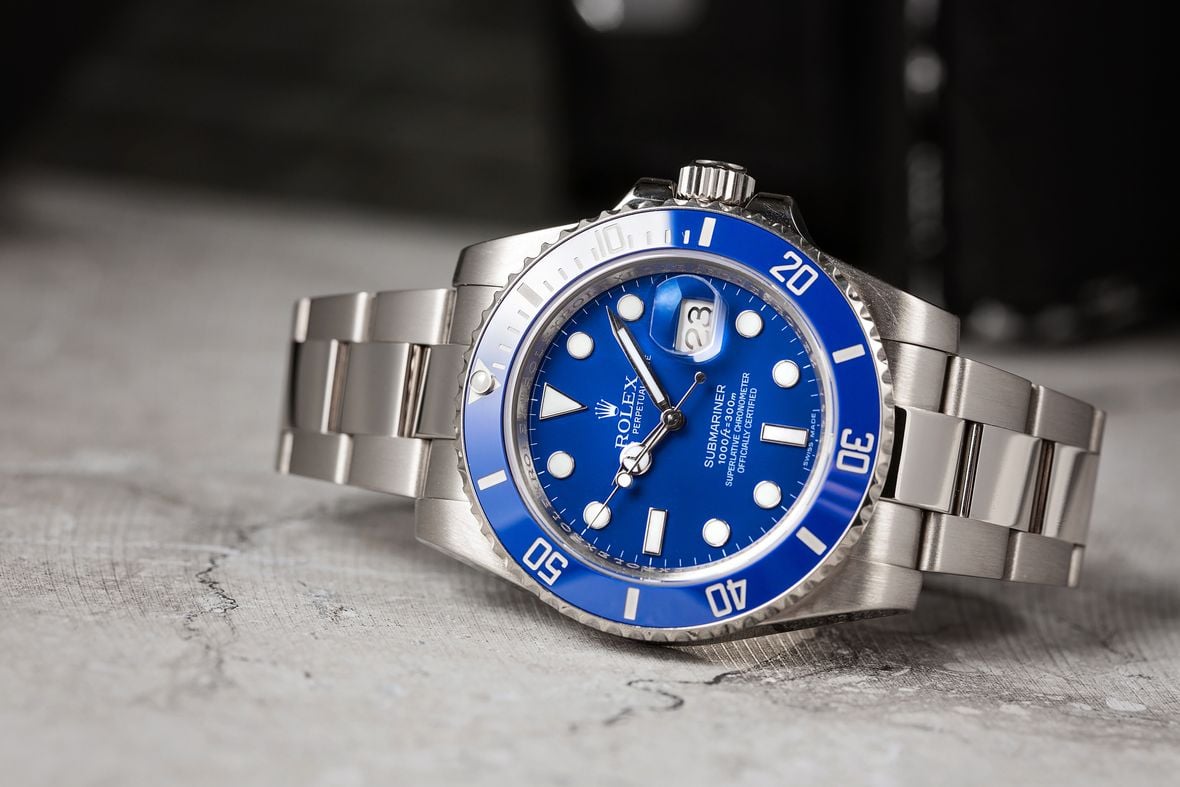There is a long list of adjectives you will come across when reading anything about the Rolex Submariner - and they are nearly always preceded by the word 'most' (or another superlative of the author's choosing). It can reasonably be described as the most iconic, most recognizable, most influential, most emulated, and most important sports watch of all time. Add to that the dubious honor of also being the most counterfeited and you have a pretty impressive spread.
Introduced in 1953, the Rolex Submariner was the first diving watch water-resistant to 100m. The watch came fitted with a rotating 60-minute timing bezel to help divers keep track of how long they've spent underwater, and the dial was furnished with plenty of luminous material to ensure readability in the murkiest of waters. While the first Submariner was fashioned in stainless steel and paired with a black bezel and black time-only dial, Rolex eventually expanded to include a Submariner Date model, available in a variety of metals and colorways. Specs, features, and materials have, of course, improved over the last six-plus decades - yet, the fundamental design blueprint is still very much there.
Through its long and eventful life, one awash in fascinating detail and rich with cultural significance, the Rolex Submariner has evolved to become an essential milestone for any serious watch collection – in either its modern incarnation or one of its many hyper-popular vintage examples. But how did it all originally come into being? Below, we trace the creation and progression of the dive watch to end all dive watches.
Click here for our Ultimate Buying Guide on the Rolex Submariner.
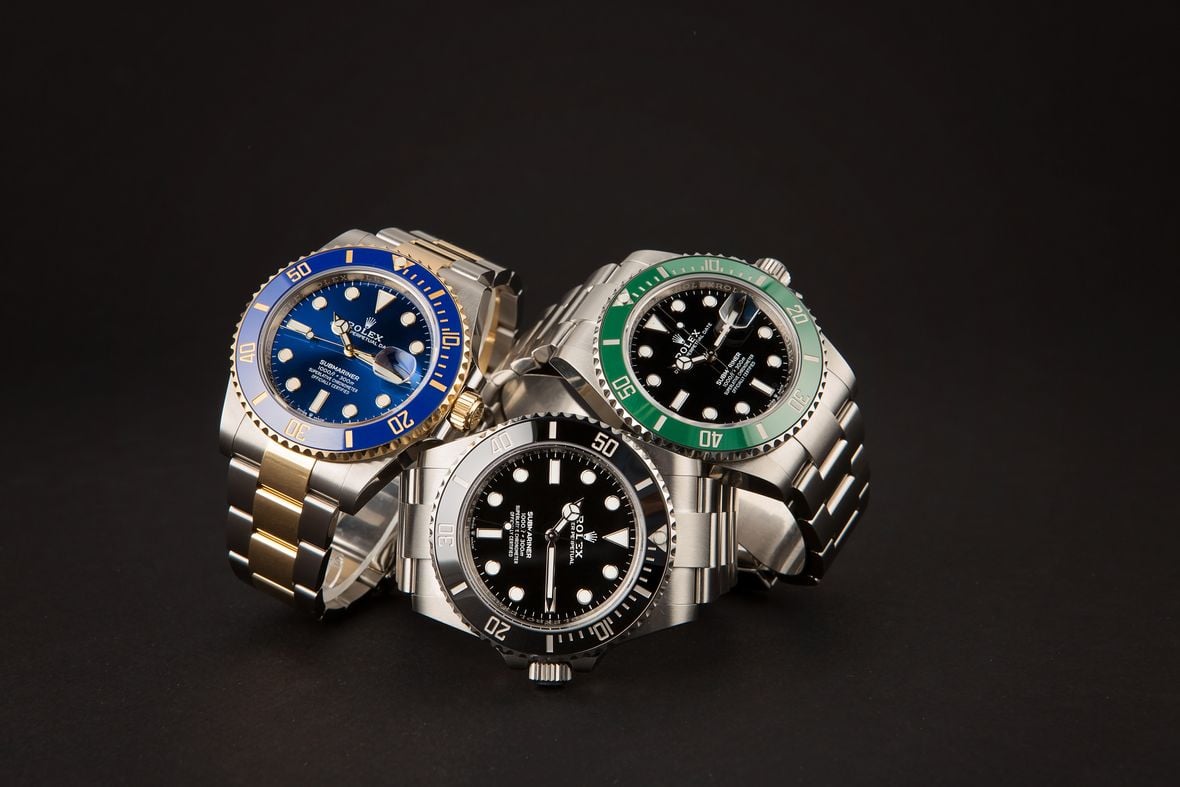
Today, just as Rolex itself has transcended the notion of being merely a watchmaker and has evolved into the ultimate illustration of attainment and luxury, so too has the Submariner moved to a higher plane. The Rolex Submariner is now just a watch in the same way that The Beatles were just a band. Yes, technically, but everything that has come after has (in some way) been shaped by it, and its cultural relevance far transcends what Rolex could have ever possibly imagined when it first created its original dive watch.
Even for a Rolex, a brand famous for how little it changes its designs over the years, the Submariner is one of the least visually altered models in the company’s history. Nearly every fundamental physical element from the first reference is to be found on the very latest model, with only the internal movements going through any sort of radical overhaul. In terms of its core blueprint, it has certainly evolved over the years but it has been a slow and measured approach that has been the very definition of evolutionary rather than revolutionary. That is the benefit of getting things right the first time.
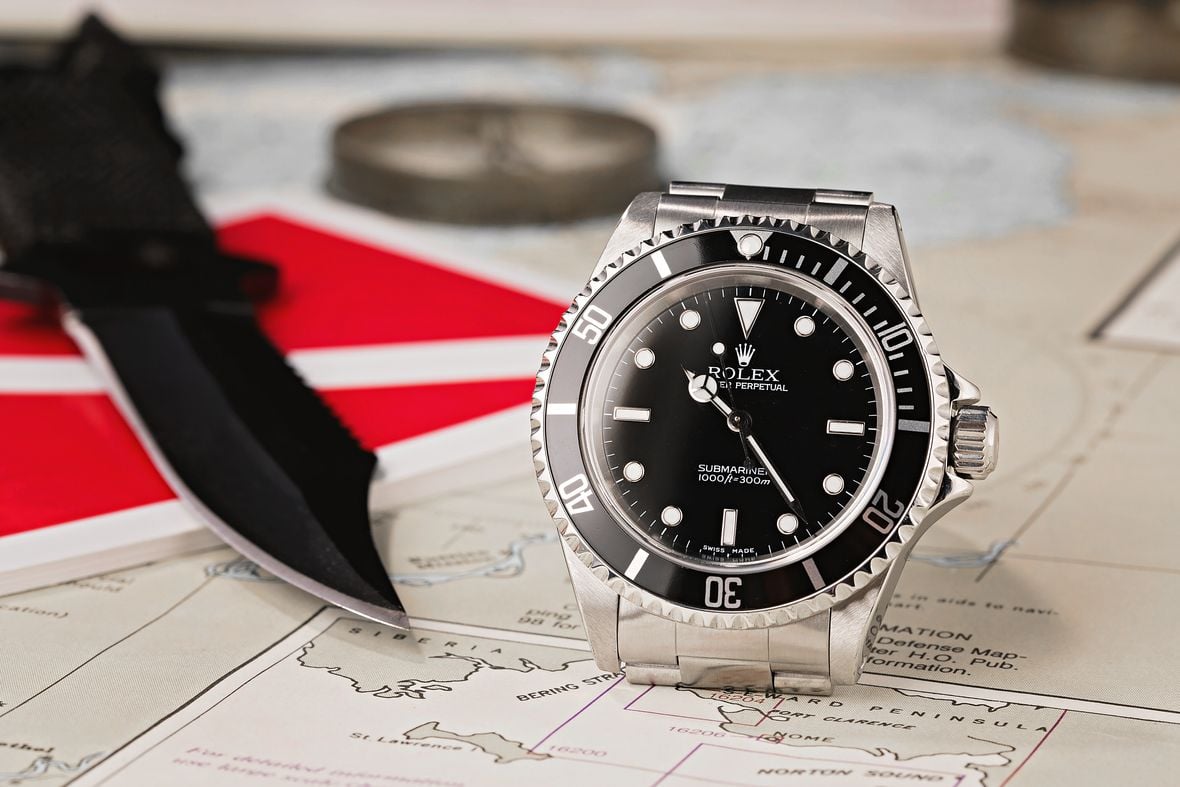
Rolex's relationship with the sea goes back long before the first Submariner surfaced. The company had been tackling the challenge of waterproofing its watches almost from the formation of the brand at the turn of the 20th century, finally coming up with the famed Oyster case in 1926. This innovation turned the wristwatch into something that could truly be worn all-day, every day and throughout a wide variety of different demanding conditions.
The Rolex Oyster case and the self-winding Perpetual movement that it perfected in 1931, transformed both the utility and, crucially, the image of the wristwatch. They could now legitimately be seen as a male accessory, whereas before they had been worn solely by aristocratic ladies and were largely viewed as fragile and woefully inaccurate pieces that were little more than jewelry.
Rolex's twin innovations saw to it that the new breed of wristwatch was robust and convenient enough for men to wear and effectively sounded the death knell of the ubiquitous pocket watch, which was traditionally the way a gentleman told the time for centuries. In fact, the two inventions were so ahead of their time they still form the backbone for the vast majority of the brand’s output today, nearly one hundred years later.
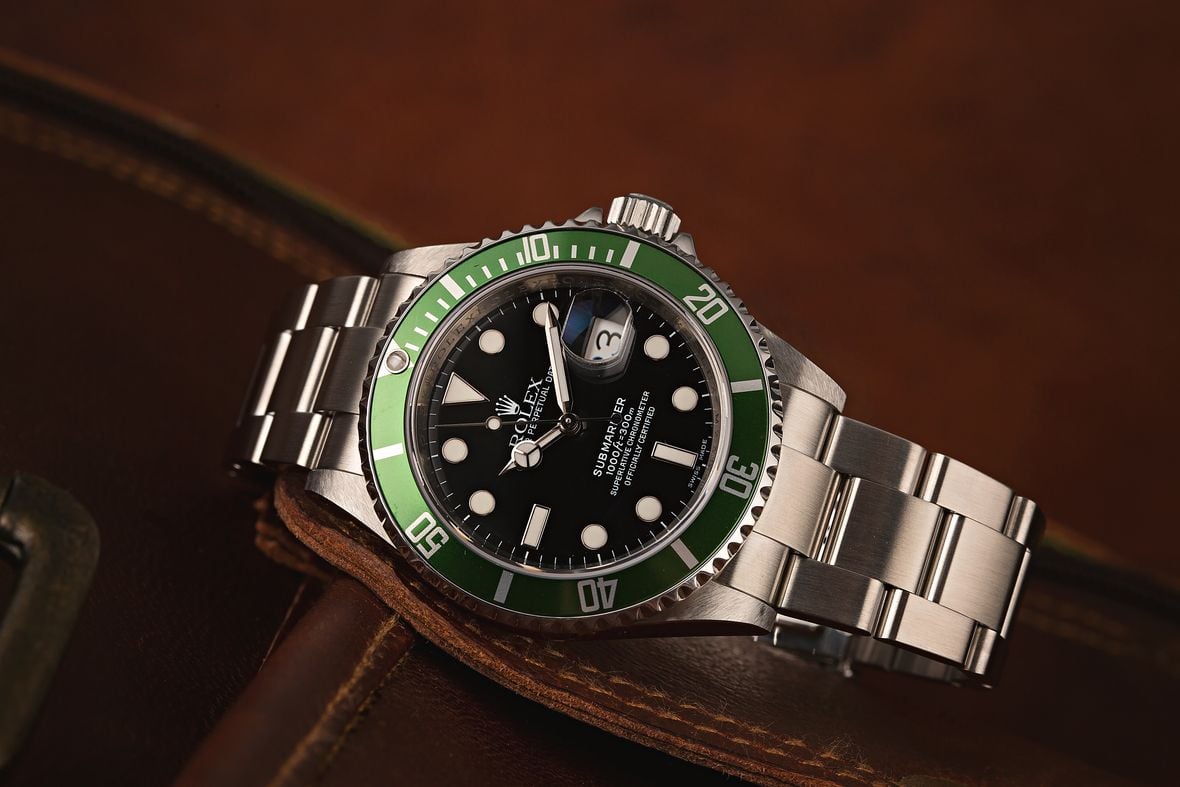
Rolex's two key technologies also found their most effective home to date in the brand's first fully-fledged dive watch. The idea for the Submariner was hit upon by the company's then-Public Relations Director, René-Paul Jeanneret sometime in the early '50s. A passionate diver himself, it was Jeanneret who was responsible for much of the work in formulating the tool watch concept - the idea that a watch could do far more than merely display the time.
This concept led to a mass of legendary names all being released within a few years of each other, including the earliest references of the Explorer, GMT-Master, Milgauss, Turn-O-Graph, and (a little later) the Daytona, all ushering in the first true 'golden age' for Rolex. However, above all these was the Submariner.
The idea of diving for recreation was still very much in its infancy, and was built on technology developed during the recently concluded Second World War. A French naval officer and underwater pioneer named Jacques Cousteau, together with associate Emile Gagnan, a compressed gas engineer, had designed and built the first Aqua-Lung in 1942. A step up from the pure oxygen rebreathers used by military divers, which delivered a continuous airflow, the Aqua-Lung supplied-air only on demand, greatly increasing the amount of time the user could remain submerged. It was Cousteau’s remarkable films of the undersea world that helped cause the explosion in popularity of Scuba diving, and as a close personal friend of Jeanneret, he was also enlisted to consult on what was needed to make the perfect dive watch.
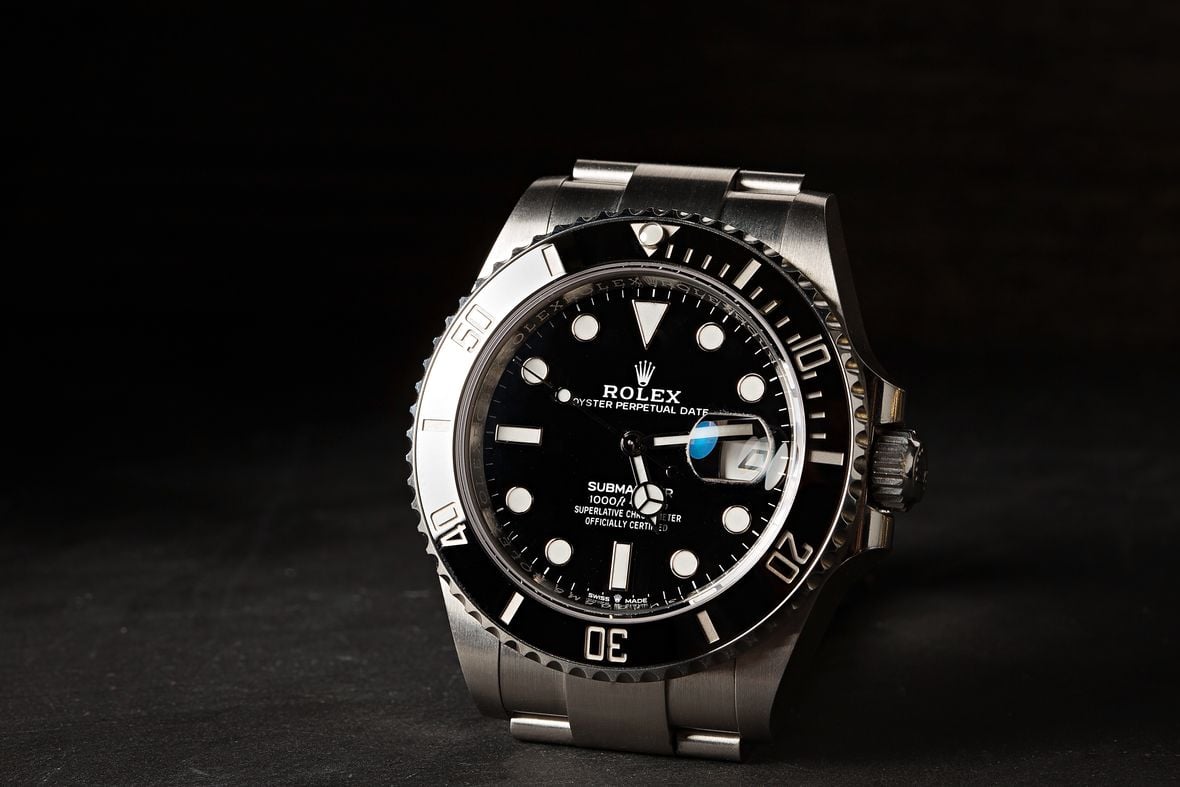
In September of 1953, a specially designed Rolex dive watch was attached to the outside of Swiss scientist Auguste Piccard’s Bathyscaphe, diving to a depth of 3131.8 meters, before returning to the surface in perfect running order without any signs of water ingress.
The following month, a lengthy testing report from the Institute for Deep Sea Research in Cannes documented 132 successful dives over the course of a 5 month period ranging from 12 to 60 meters in depth. Numerous dives were taken with the crown pulled out to the time setting position, and yet not once were there signs of water ingress, whereas the report states that other watches submitted for testing from other brands all wound up suffering failures along the way.
To conclude their test session, the watch was tethered to a cord and lowered to 120 meters below the surface for over an hour and still, even 20 meters past its rated resistance, no signs of leakage were detected.
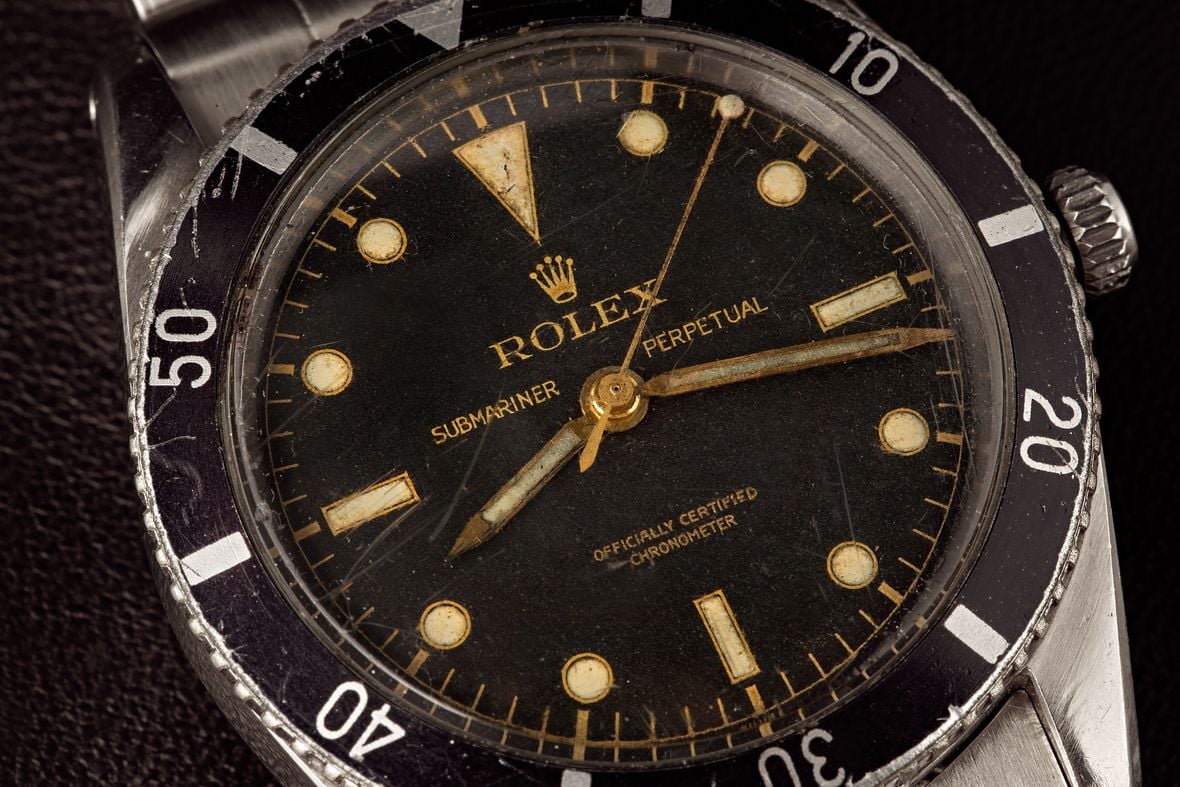
Despite its position as the most famous dive watch in the world, the Rolex Submariner was not, as is occasionally touted, the very first dive watch ever created.
Depending on your definition, that honor could be attributed to either the Omega Marine from 1932, or even the Panerai Radiomir from 1936 (a watch made for the Regia Marina, the Italian Special Forces diving unit, and one that used Rolex cases and movements). However, it was another model designed in conjunction with the navy, the French one this time, that can most reasonably claim to be the first modern dive watch as we would recognize it today.
The Blancpain Fifty Fathoms was the model that really set down what a working underwater timing device needed, devised as it was by two military frogmen, Captain Robert 'Bob' Maloubier and his second-in-command, Lieutenant Claude Jean Riffaud. Between them they set up the Nageuers de Combat, or combat swimmers division, for the French Ministry of Defense in 1952. With little to no suitable equipment in existence, they were forced to create their own, leading to them drawing up a set of sound guidelines for a battle-ready dive watch.
Among the stipulations were a black dial with white indexes and handset for high contrast readability, an automatic movement so the crown (traditionally the weakest point in any waterproof watch) would need to be used as infrequently as possible, a rotating bezel to help track immersion times, and (naturally) a robust waterproof case. Unfortunately for Rolex, who was proceeding along almost identical lines, Blancpain was first to the punch by mere months. The Fifty Fathoms was released in 1953, the same year the initial Submariner was built, but it wouldn't make it into full production until the following year, making its entrance at the 1954 Basel Fair.
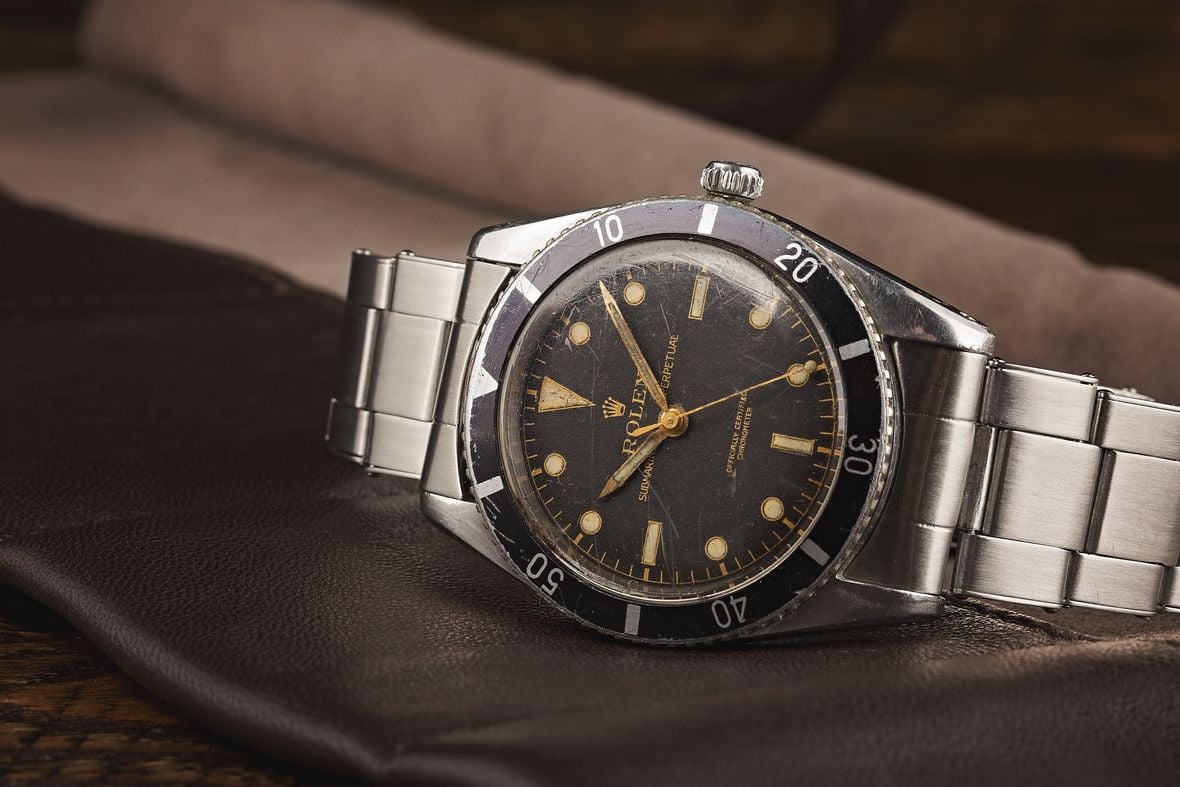
The ref. 6204 (generally accepted as the debut Submariner, although there is some debate) was an instant hit and shared the majority of the same attributes as the Fifty Fathoms. The dial (either glossy gilt or honeycomb) was jet black and ringed with the same mix of dots and batons for hour markers and an inverted triangle at the 12 that you will see in the current-production examples. All were filled with plenty of lume (still radium in this era). The hands had not yet graduated to the Mercedes style present on most Rolex sports models these days and were a plain stick or pencil type.
As for the bezel, it was marked for 60-minutes as usual but was missing the hashes for the first 15. These were included on later editions and helped wearers more accurately track shorter durations of time, which would improve overall usability while timing things such as decompression stops. However, it did have one minor and unavoidable drawback.
Blancpain held the patent for the unidirectional bezel (as in one that turns only counterclockwise). The idea was the brainchild of the brand’s CEO Jean-Jacques Fiechter, another keen diver, and it acted as a rudimentary failsafe. The unidirectional bezel ensured that if the bezel got accidentally moved underwater, it would only over-read the supposed time spent submerged, thus helping divers avoid the potential dangers of decompression sickness. With the copyright belonging to Blancpain, the Rolex Submariner had to make do with bidirectional bezels all the way up until the 1980s.
However, Rolex did own the rights to an arguably more important innovation of its own, one the brand expanded on expressly for the Submariner. Part of the Oyster case construction from the mid-1920s was a specific winding crown system, where the crown was fitted with a gasket that would screw into a tube inside the watch case. It provided an impressive amount of protection against moisture and various other debris getting in and jamming up the movement. For the new purpose-built dive model though, it was obvious this was going to have to be beefed up significantly.
The eventual result was the Twinlock crown, an arrangement that utilized two sets of O-rings to form a pair of watertight seals within the winding stem assembly, enabling the Rolex Submariner to be the first dive watch rated down to 100 meters (330 feet).
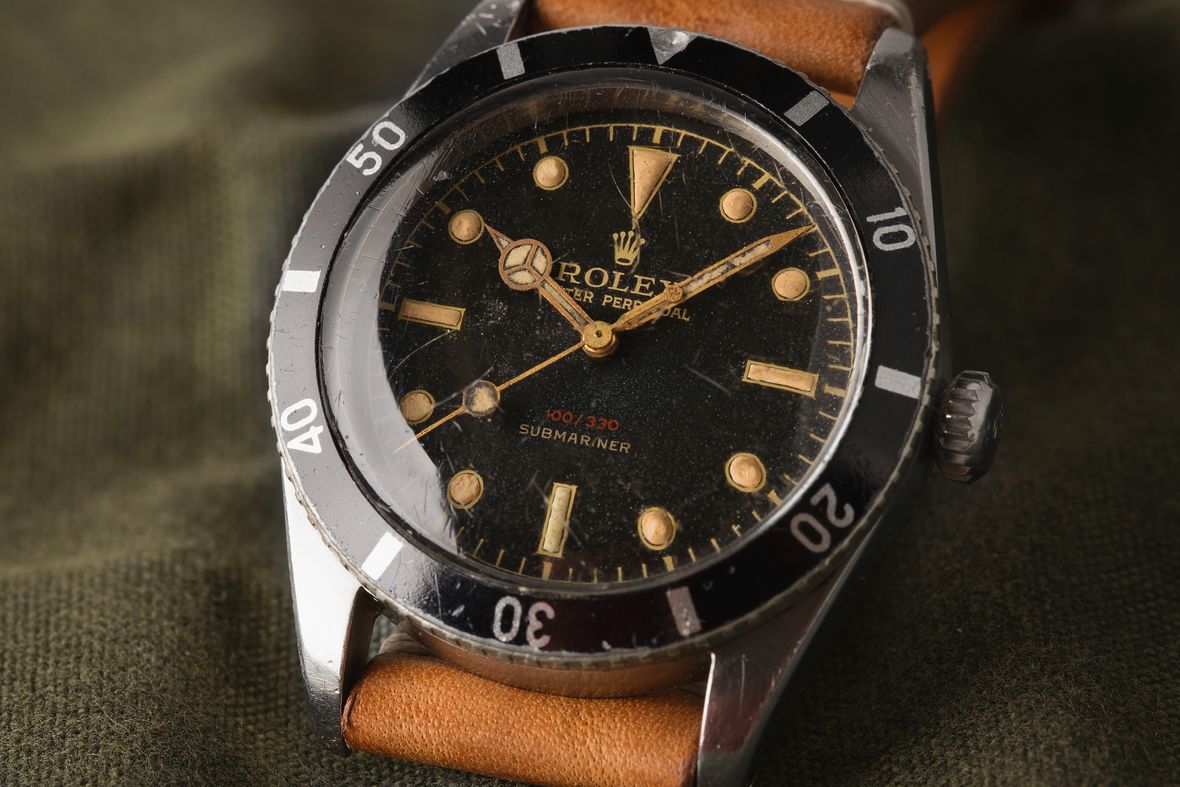
The Rolex Submariner had hit the ground running (or swimming), but even though it had captured the imagination of a wide and appreciative audience, there was still plenty of work to do.
The next six years saw a total of eight total references of Rolex's dive watch being released, some running concurrently with others, and each with some kind of alteration intended to perfect the overall design. Without getting into the exhaustive detail, the models that followed on from the ref. 6204 were as follows.
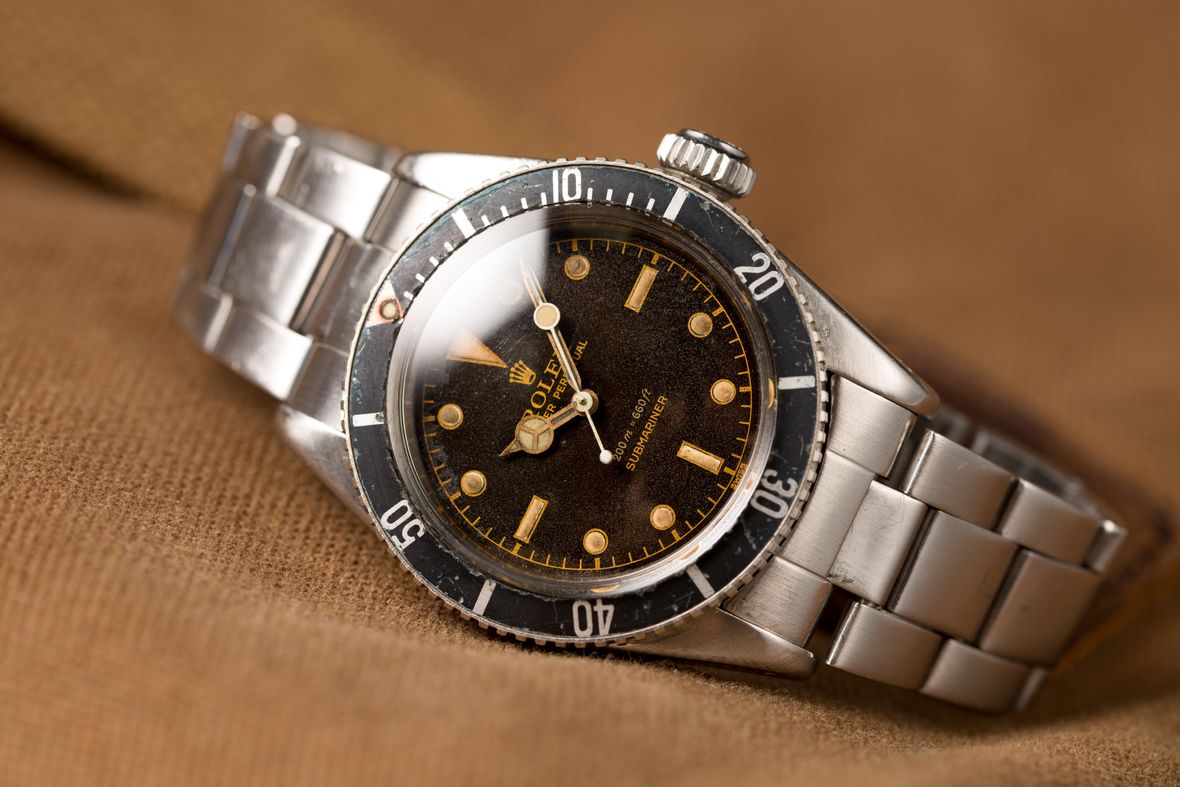
The Rolex Submariner had always been styled elegantly enough to be more than just a dive implement. Its sophisticated minimalism matched with everything from t-shirts and jeans all the way up to perfectly tailored tuxedos – just ask the greatest advertisement any timepiece ever had, James Bond. Agent 007 wore a Submariner in a total of eight outings, paired with everything from a wetsuit to dinner suit.
Ian Fleming's first Bond film features the legendary Sean Connery sporting a Submariner reference 6538 throughout the film. It's speculated that the watch was actually the personal timepiece of producer Albert "Cubby" Broccoli, who lent it to Connery when they filmed Dr. No, though it didn’t take long before the timepiece became synonymous with the suave and gadget-equipped super spy. The Submariner 6538 continued to appear in further installments of the epic Bond franchise, including From Russia With Love, Goldfinger, and Thunderball. Other Submariner references that appeared in later Bond films were the ref. 5513 and the ref. 16610.
By the time the 6538 was retired from the Bond franchise, Rolex had released two other iconic Submariner references. The classic ref. 5512 and ref. 5513 hit the market in 1959 and 1962 respectively, both of which effectively-being known as the grandfathers of the modern Submariner dive watch.
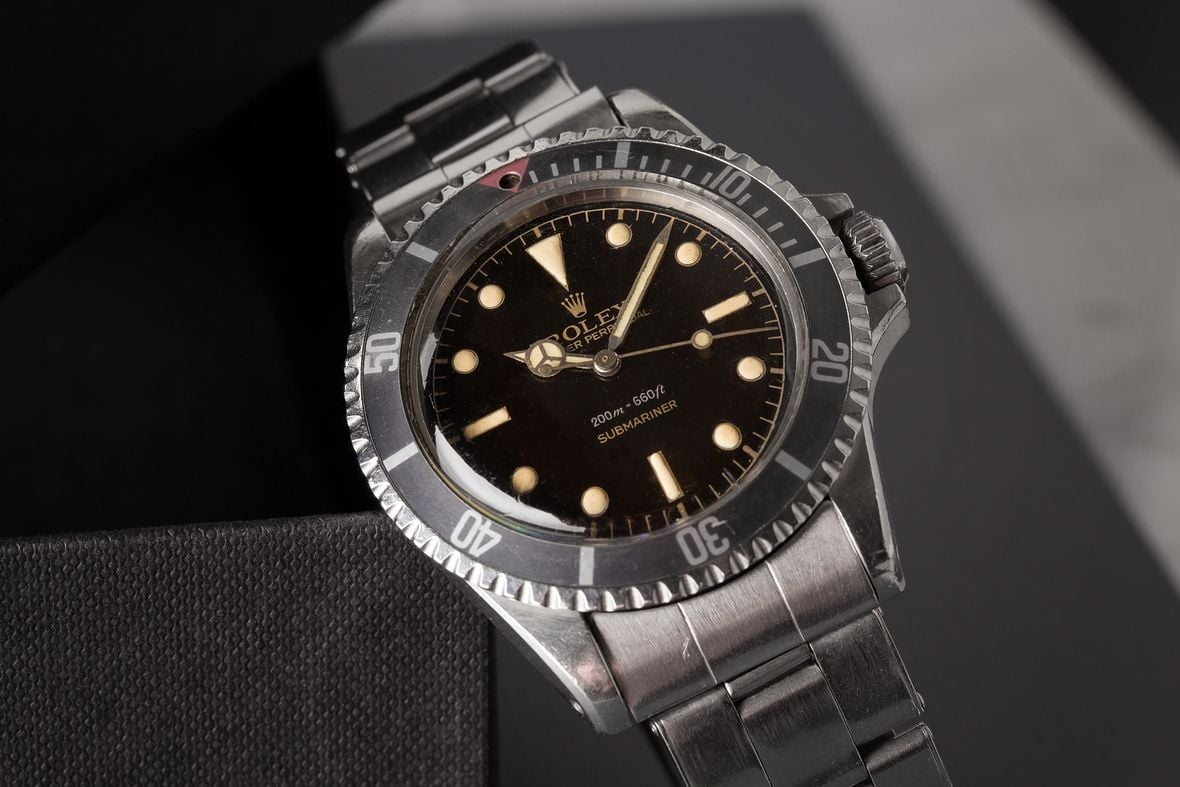
Following its turbulent first few years during which Rolex seemed to endlessly alter the Submariner’s design, the watch reached a point of some consistency in 1959, when the ref. 5512 emerged. With the arrival of this reference, all the pieces fell into place so effectively that the underlying architecture of the watch remained the same for the next half-century.
The model was the amalgamation of all the various elements that had worked from the previous eight versions of the Submariner, all joined together for the first time. The reference 5512 had a 40mm case, a Mercedes handset, the complete markings on a redesigned bezel, as well as its most significant previously-unseen addition, the introduction of crown guards. In fact, everything you will find on the modern-day version of Rolex's iconic dive watch (more or less) had its start here.
So successful was the outcome that there was essentially nothing left to do as far as the core aesthetic was concerned. Right up until 2010 with the arrival of the Super Case, most of the major alterations to the Submariner collection pertained to either improved materials, updated movements, or minor revisions in design, and it would not be until 2020 that Rolex would increase the size of the Submariner to 41mm.
The ref. 5512 and its non-COSC certified sibling, the ref. 5513, were both extremely long-serving models. The ref. 5512 ran from 1959 to 1980, while the ref. 5513 from 1962 all the way up to 1989. With that in mind, they were not the only Submariner watches around during this time. At the end of the 1960s, Rolex split the Submariner range, and the opinions of the watch’s legions of fans, by releasing the first Submariner with a date, the reference 1680.
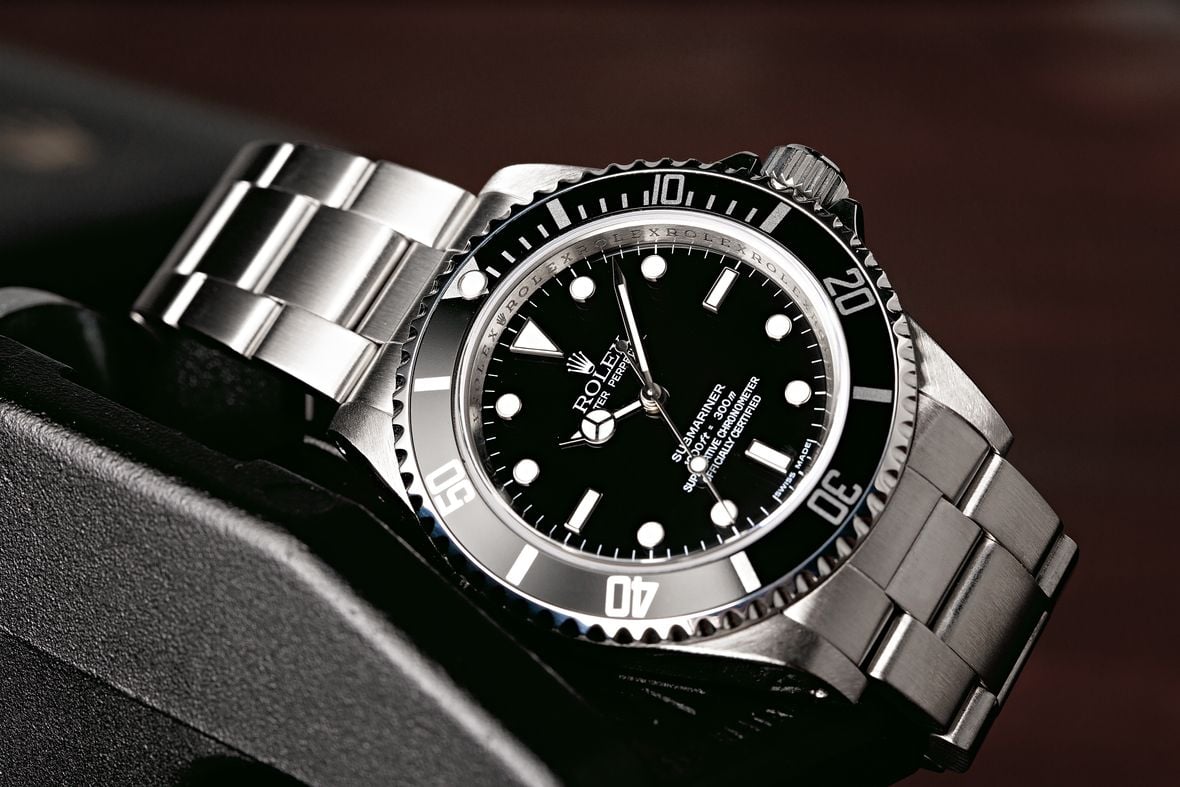
It is important to note that although Rolex now produces Submariner watches both with and without date displays, those with the calendar function are technically classified as Rolex Submariner Date watches, which will be covered in more detail below.
Therefore, below is a list of the different no-date Rolex Submariner watches (made from 1959 onwards), their movements, and approximate years of production.
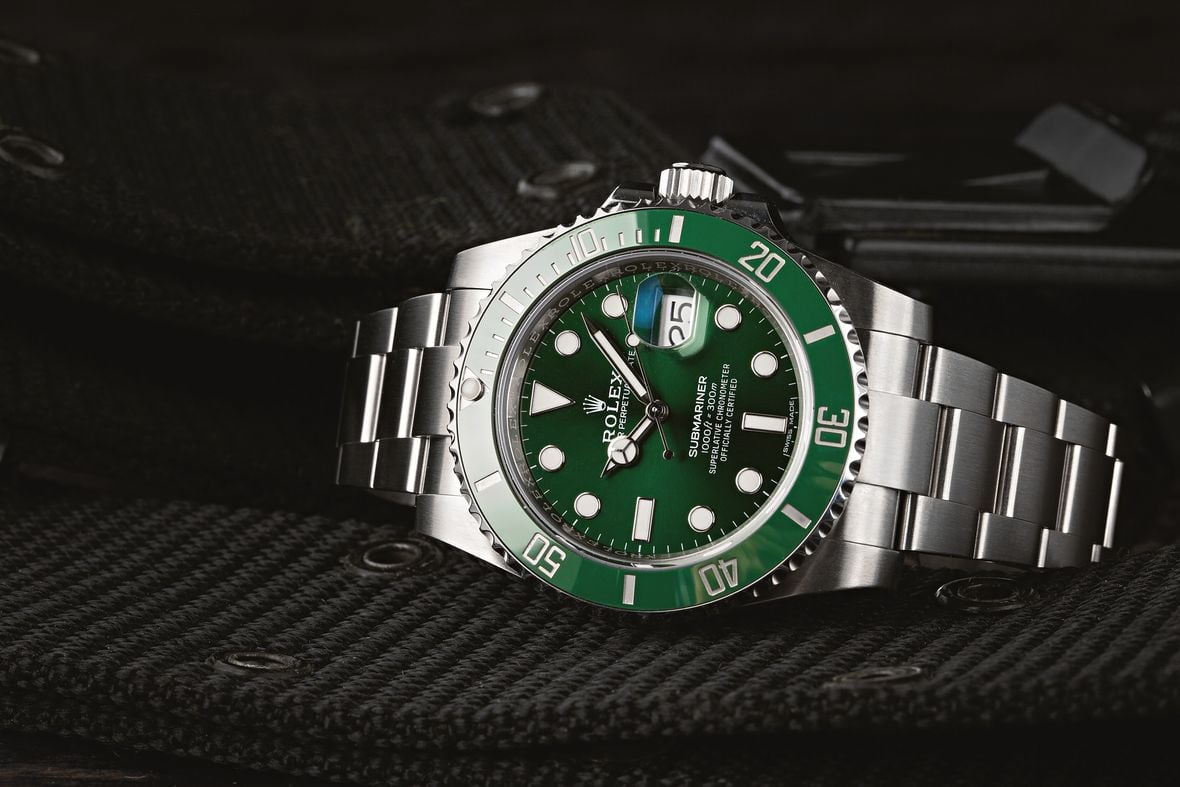
In most other respects, the ref. 1680 was practically identical to the 5512/5513 references. However, it brought a date function to the series for the first time, complete with "Cyclops" magnification lens. For many critics, that one relatively modest inclusion signaled the end of the Submariner as the purpose-built dive watch and heralded the start of its ascent into what would ultimately become status symbol territory. According to critics, real divers had no need of a watch that tells them the date of the month. In truth, the Submariner has always been bought by far more non-divers than divers, and it is the same story for most of the brand's models. You won't see all that many Rolex Daytona watches in the paddock of the average speedway or Explorer watches on the summit of Mount Everest either these days, for example.
As for Rolex, the brand decided to embrace the status symbol tag wholeheartedly with the ref. 1680's arrival. The earlier examples of the 1680 are known as the Red Sub thanks to the SUBMARINER name written in red on the dial. Rolex produced the red-dial versions until 1975 when a White Submariner 1680 took over. Along with being the first Submariner with a date complication, the 1680 generation would also be the first released in 18k yellow gold as well. That piece, the 1680/8, also debuted a blue dial and bezel option, representing the first time that it had appeared in anything but all-black.
In 1979, the Rolex Submariner saw a major update with the introduction of the ref. 16800. In addition to the updated Caliber 3035 movement, the new generation of Submariner watches also benefited from a ratcheting, unidirectional bezel and a scratch-resistant sapphire crystal (rather than acrylic like on previous models). Due to its more robust case design, the depth rating for this new generation of Submariner watches increased to 300 meters (1,000 feet), which is the same water resistance rating as the contemporary Submariner watches that Rolex manufactures today. This particular generation also welcomed the first two-tone Submariner in the form of the 16803, released in 1984.
Additionally, since the ref. 168000 of the late-1980s, Rolex has used 904L stainless steel (now known as "Oystersteel") for the construction of its Submariner dive watches. This ultra corrosion-resistant steel is almost exclusively used within the aerospace and chemical industries, and is able to take on a remarkable shine when polished. In fact, no other company in the world except Rolex has the expertise or economies of scale to use this exclusive material for the production of every single one of its stainless steel cases and bracelets.
Ever since the arrival of the ref. 1680, Rolex has poured far more variety into the Submariner Date than the No-Date models, gifting them with a host of new metal combinations and different colorways. The no-date Submariner has remained as it always was, an exclusively stainless steel creation with a black dial and a black bezel, and it is still very much loved by the purists.
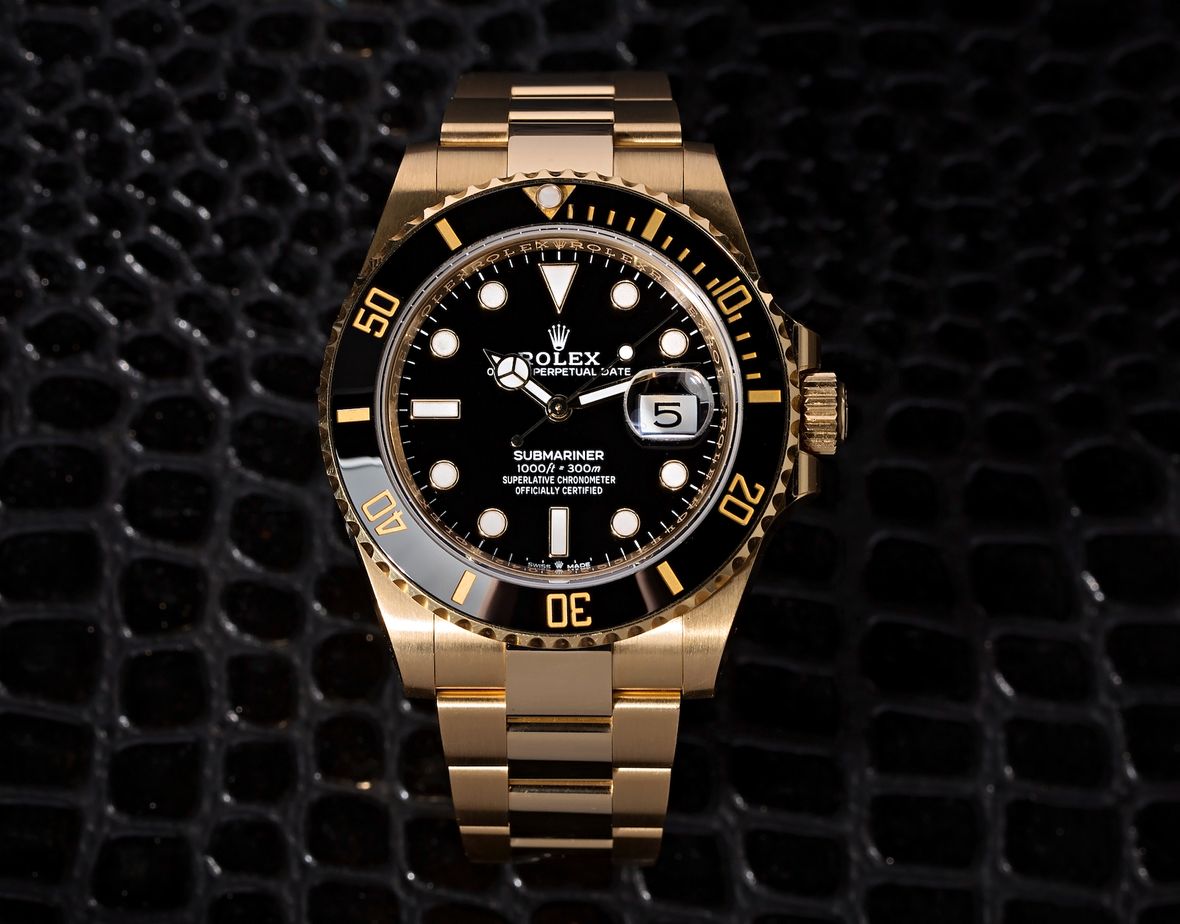
Below is a list of the different Rolex Submariner Date watches, their movements, and approximate years of production.
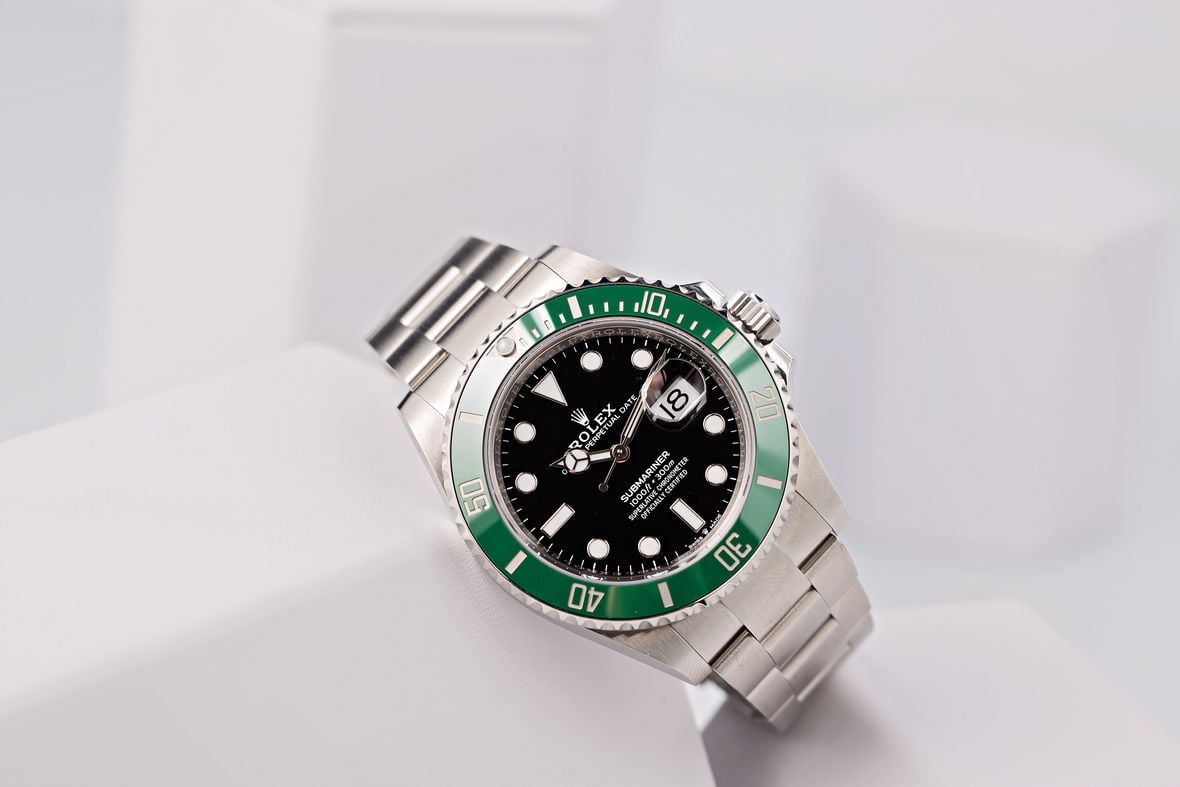
In 2003, the Submariner reached its half century. Rolex commemorated the occasion with a new stainless steel edition, the ref. 16610LV, with the 'LV' standing for Lunette Verte, or "green bezel" in French. Although a popular color for Rolex as a manufacturer, this was the first time it had used green in the design of its world-class diver. Immediately nicknamed the Kermit by collectors, it has since become one of the most sought after variants of the Submariner’s neo-vintage era.
The following generation, the ref. 1166xx series brought about the biggest change to the watch’s appearance since the ref. 5512 in 1959. To start with, the model’s bezel insert was now crafted from Cerachrom, a proprietary ceramic material that had recently debuted on the 50th anniversary GMT-Master II. Both fade-proof and scratch-proof, it is pretty much guaranteed to stay looking brand new forever.
First appearing on the solid gold Rolex references 116618 (yellow) and 116619 (white) Submariner in 2008 before working its way through the model range over the following few years, Cerachrom ceramic had a huge impact on the aesthetics of the watch, all while making the bezel significantly more durable. The then-new Submariner generation also featured a "Maxi" dial with larger hour markers and thicker hands, along with an upgraded Oyster bracelet with a new clasp and solid center links.
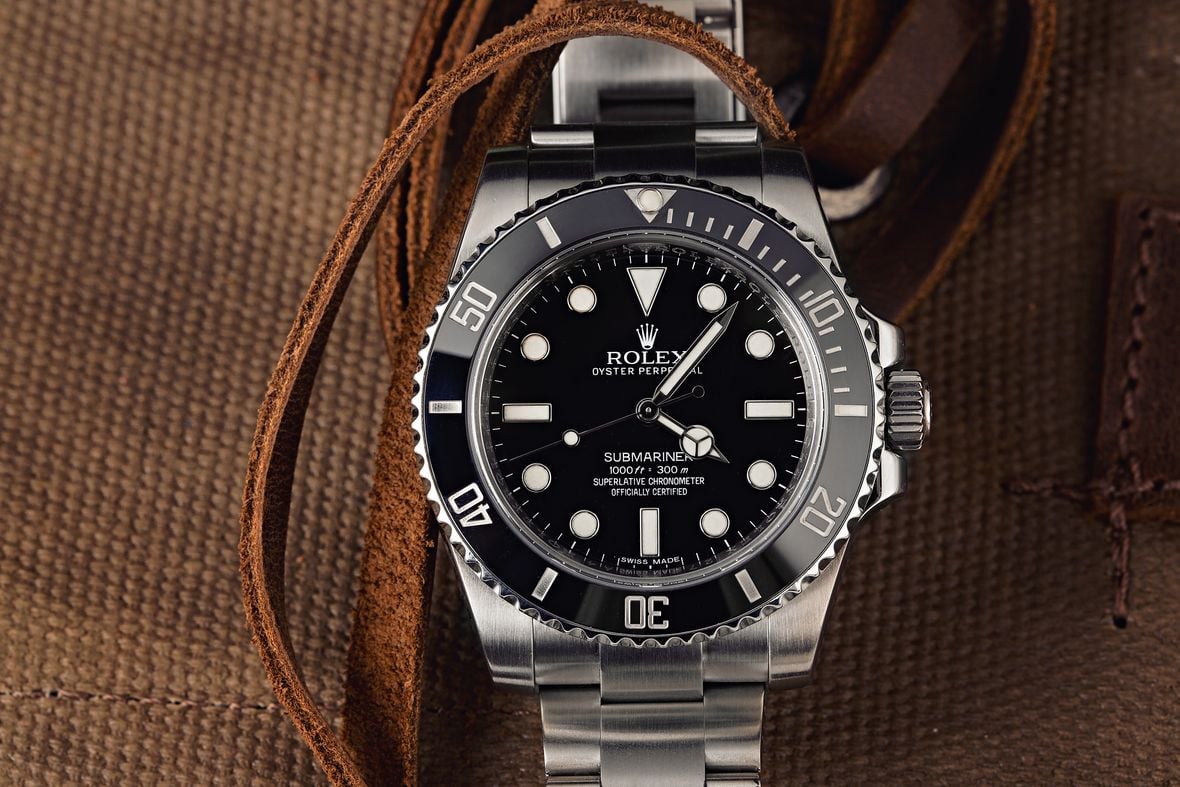
In response to increasingly vocal calls for a larger example of the Submariner, with some suggesting 40mm was too small for a modern sports model, Rolex brought out the Super Case with the Submariner 1166xx series. While still the same dimensions on paper, the lugs and crown guards were made significantly thicker, giving it the impression of being a far bigger watch. Just as with the arrival of the date feature, the Super Case also divided fans. Many appreciated the upturn in wrist presence, while others missed the flowing lines of references past.
It would take until 2020 until Rolex found a way to keep both sides happy. The new ref. 1266xx range is the first to have grown past the Submariner’s self-imposed 40mm limits, even by just 1mm. However, the Super Case’s bulky, squared-off elements have been softened, returning to a case with a more elegantly sweeping silhouette, while still keeping the more angular design of the previous generation.
More importantly, the movement has finally been upgraded. The Submariner Date had been driven by the Cal. 3135 for more than 30-years by the time the latest iteration of the watch hit the stores. A superb caliber that is recognized as one of the finest mass-produced movements ever made, it was still time for retirement, with many of Rolex's other models having already received their next generation of mechanisms several years before. The latest time-and-date standard for Rolex, the Cal. 3235, has replaced or improved upon around 90% of the components from the outgoing Cal. 3135, resulting in a world-beating movement for a new age.
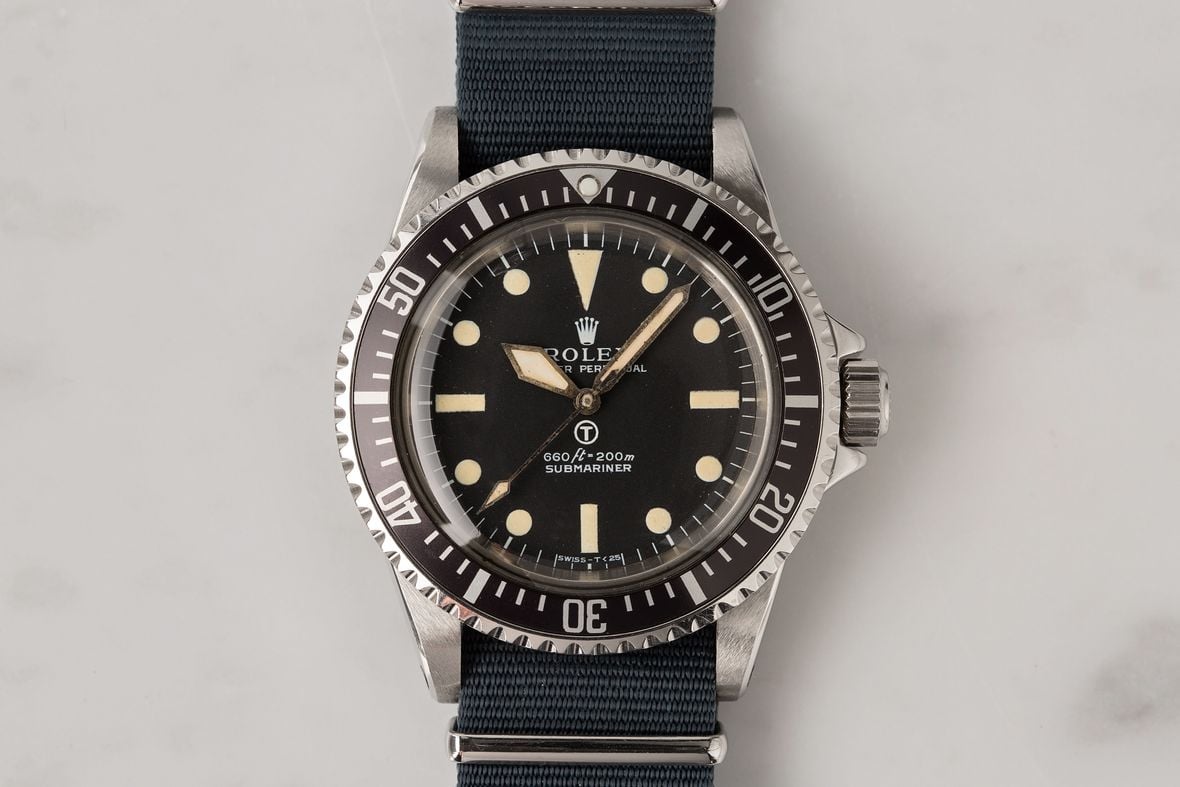
The clearest sign of just how good the Submariner was can be found in how quickly the military started knocking on Rolex's door. As early as 1956, the British Ministry of Defense came looking for a new standard-issue timepiece for the Royal Navy's fledgling special forces combatants. They were given around 50 examples of the civilian version of the ref. 6538 (the Bond Sub), pieces which were subsequently given the most rigorous field testing imaginable.
In 1957, the MOD returned, respectfully asking for just a couple of minor adjustments to the off-the-shelf watch available to everyone else. The biggest change was a slight reshaping of the bezel, which the navy divers were finding hard to turn while wearing gloves. Rolex responded by increasing its diameter so it overhung the sides of the case, and by altering the edging, from its coin-edge style to the serrated type we know today. Rolex also made the insert from nickel silver rather than the previous plated brass so it was less likely to crack under impact.
Other than that, along with a request for the standard spring bars to be replaced by a solid bar soldered between the lugs to more securely hold the NATO straps, the Rolex Submariner had more than proved its reputation as the toughest diver’s watch on the planet. Those models, rechristened the A/6538, served with distinction right up until 1967, when the navy switched briefly to the Omega Seamaster.
However, the Royal Navy was back to Rolex in 1971, adopting three more references for its unit, the ref. 5513, the double-stamped ref. 5513/5517, and the military-exclusive ref. 5517. Together, the four iterations have become known as the Rolex MilSub watches and represent some of the holiest of holy grails in all of vintage Rolex collecting.
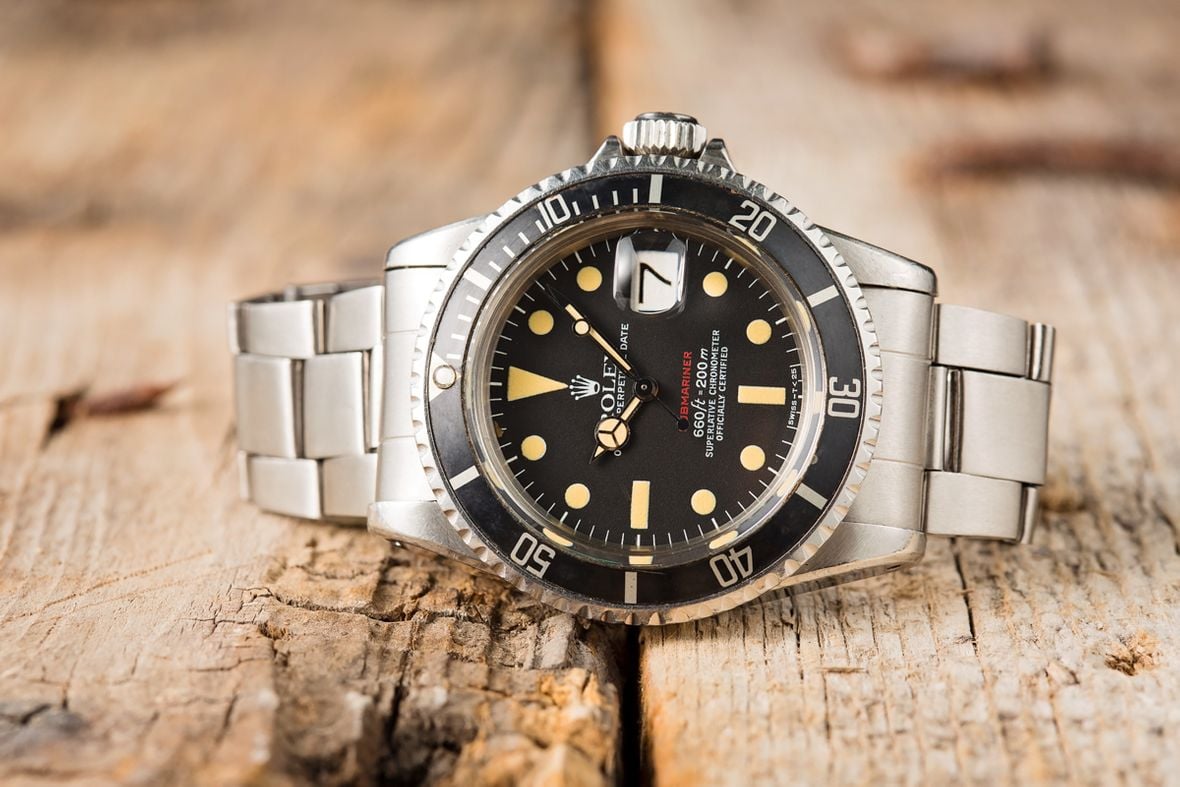
More often than not, a Submariner is the first port of call for anyone starting their journey into Rolex collecting. In fact, the Sub is frequently the reason the journey starts in the first place. So how much will you need to spend to add one to your watch box?
The good news is that you can probably buy a Rolex Submariner for less than you think. Entry point ballpark figures are around $10,000 to $12,000. For that, you will likely find an example of the ref. 16610 (or the no-date equivalent ref. 14060) from the 1990s, a pre-Super Case watch with many modern-day attributes such as a scratch-resistant sapphire bezel (the key exception being a ceramic bezel), a faultless internal movement, and the single most identifiable design that horology has to offer.
If you're lucky enough to have an absolutely enormous amount of money to throw around, then there are also plenty of Rolex Submariner options at the top end. Some of the earliest vintage references are incredibly rare and consequently cripplingly expensive, with some worth north of a million dollars.
The first of the Big Crown Submariner watches is the ref. 6200, better known among fanatics as the King Sub, was in production for less than a year and it is thought only around 300 were ever made. Even more unusually, the dial has the 3/6/9 hour markers more commonly associated with the Rolex Explorer. The last time one was sold was in 2017, changing hands at auction for $579,000. Similarly, an ultra rare example of a ref. 6538 with an Explorer-style dial and red depth rating sold for more than a million dollars at an auction in 2018 - and it achieved that impressive sum while missing both its bezel and bracelet.
Fortunately, in-between those two extremes, there is a model for just about every pocket. Two-tone Rolesor pieces remain extremely popular, each one with the choice of either a black or blue dial and bezel. For the quintessential 1980s throwback vibe, the ‘Serti’ dials were sometimes fitted to these and the all-gold watches, featuring gemstone indexes. These too can be bought for surprisingly realistic figures, with starting prices for most examples hovering around the $13,000 to $15,000 mark.
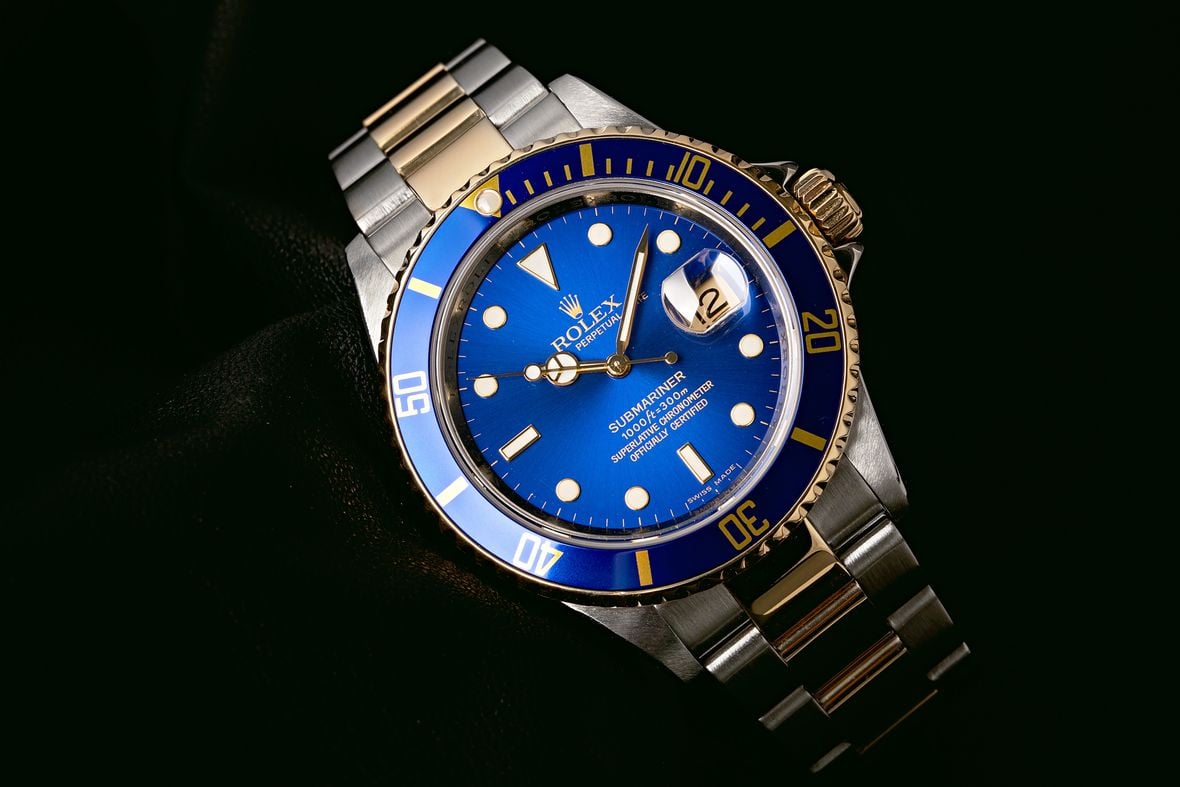
It is almost strange to think that a watch that was originally designed to be a purpose-built underwater timing tool for the budding recreational scuba diving crown has evolved to become one of the most famous and instantly recognizable luxury watches in the entire world. However, the Rolex Submariner is so versatile and successful in its core design that this drastic evolution seems entirely appropriate – even almost expected.
Despite the numerous changes, at its core, the contemporary Rolex Submariner is very much the same watch that Rolex first unveiled to the public more than a half-century ago. Additionally, since its introduction in 1953, the Rolex Submariner has served as the blueprint for contemporary sports watches, and nearly all dive watches that exist today were (in some way or another) influenced by the Rolex Submariner.
A key part of the Submariner's enduring success and one of the many reasons why it is so special lies in the fact that the Rolex Submariner has retained its rugged and sporty appeal throughout all these years, while simultaneously always being sophisticated enough to wear to a formal dinner party or boardroom meeting.
The Rolex Submariner remains eternal, a timeless example of immaculate industrial design and a watch that will forever be the benchmark by which all others are measured. So, are you ready to add one to your collection?
